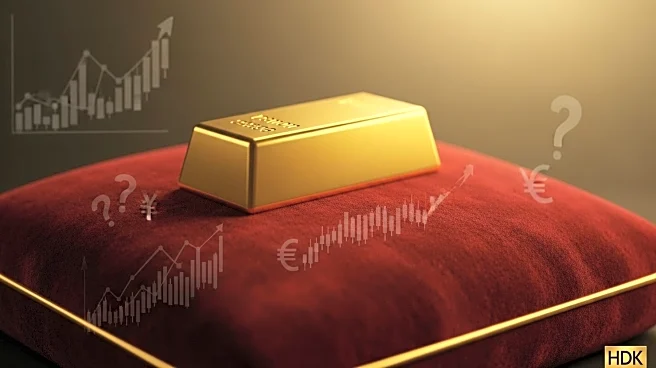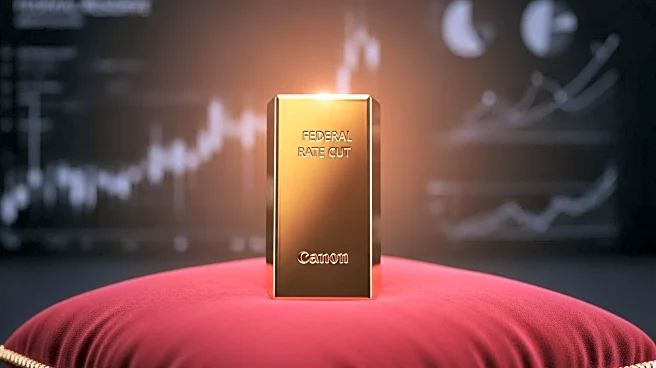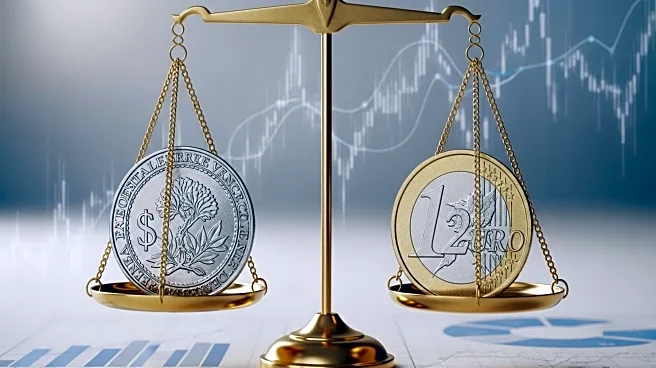What's Happening?
Gold prices have surged, closing August with significant gains as market sentiment turns bullish. Spot gold reached $3,443.50 per ounce, marking a 4.7% increase for the month. This rise is largely driven by expectations of a Federal Reserve rate cut, following dovish remarks by Fed Chair Jerome Powell at the Jackson Hole Symposium. Powell indicated that economic risks might necessitate a shift in monetary policy, which the market interpreted as a potential easing. The anticipation of a rate cut has been further fueled by a weaker US dollar, which fell by approximately 2% in August, enhancing the appeal of dollar-denominated gold. Additionally, political uncertainty, including President Trump's attempt to remove Federal Reserve Governor Lisa Cook, has intensified market volatility.
Why It's Important?
The potential Federal Reserve rate cut is significant as it could impact various sectors of the U.S. economy. A rate cut generally supports commodity prices, including gold, by making borrowing cheaper and potentially stimulating economic activity. This development is crucial for investors and industries reliant on commodity markets, as it may lead to increased investment in gold as a safe-haven asset. Furthermore, the political tension between President Trump and the Federal Reserve raises concerns about the Fed's independence, which could affect the U.S. dollar's status as the world's reserve currency. This situation may lead to broader economic implications, including shifts in global financial markets and investor confidence.
What's Next?
The upcoming nonfarm payrolls report is expected to play a critical role in the Federal Reserve's September interest rate decision. If the report indicates weak hiring and increased labor market slack, it could solidify the case for a rate cut, further boosting gold prices. Conversely, stronger-than-expected economic data might lead to a consolidation of gold prices at current levels. Analysts are closely monitoring these developments, as they could influence future monetary policy and market dynamics. Additionally, ongoing geopolitical and institutional uncertainties may continue to affect market sentiment and economic forecasts.
Beyond the Headlines
The conflict between President Trump and the Federal Reserve highlights deeper issues regarding the independence of monetary policy institutions. This situation raises ethical and governance questions about the influence of political figures on economic decision-making. The potential impact on the U.S. dollar's global standing could have long-term implications for international trade and financial stability. Moreover, the increasing concerns about stagflation, where inflation and economic stagnation occur simultaneously, could lead to a reevaluation of traditional economic strategies and safe-haven investments like gold.












